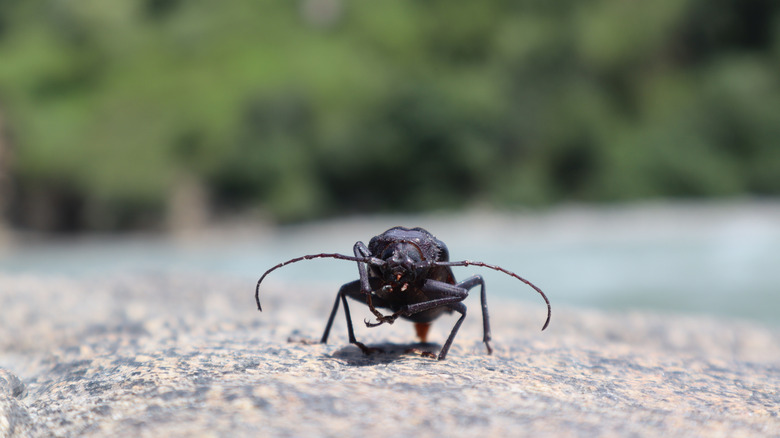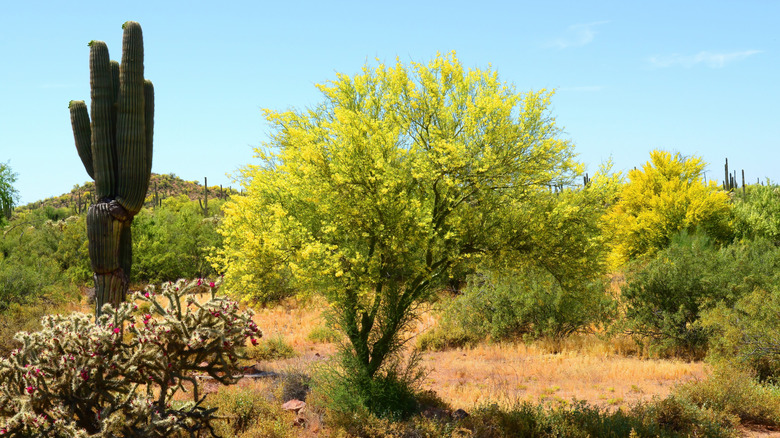Identify And Control Palo Verde Beetles On Your Plants Before It's Too Late
Palo verde beetles are big, reaching 2 to 4 inches in length when fully grown, with wings and long antennae, and are brown or black in color. While scary looking, these bugs don't bite or sting and aren't aggressive toward humans or animals. Plants, on the other hand, are a different story. Palo verde beetles are known as root borers. The females lay eggs in the soil 2 to 3 inches deep near host trees — typically palo verde trees and similar plants. This means that once you become aware of a palo verde problem — which could take years to cause noticeable damage — there's not much you can do other than call in professional pest control. That's why for this pest, prevention is key, and it lies in keeping your trees healthy.
It's important to understand the lifecycle of palo verde beetles. While the adults die shortly after reproduction, the larvae remain underground, feeding off tree roots for three or more years — and their appetites are insatiable. Grubs tend to feed on the roots of stressed and weak trees and may cause serious damage or even death. Signs of a palo verde beetle infestation include the gradual death of branches, occurring one by one. You may also notice quarter-sized holes around the base of the tree near the root zone, indicating beetle activity underground. However, healthy trees usually withstand the beetles' presence.
Keep your trees healthy and beetle-free
Saving your dying plants and maintaining the health of thriving trees involves many of the same essential practices, such as ensuring proper maintenance, avoiding these watering mistakes, and fertilization. Pruning dead or damaged branches helps promote new growth and alleviates stress on the tree. Regularly clean up fallen leaves, rotting wood, and other organic materials around your property that will attract palo verde beetles.
Like many insects, palo verde beetles are attracted to light, especially at night, so it's recommended to reduce outdoor lighting or use special "bug" bulbs. For plants that are particularly at risk, think about installing some sort of protective barrier, like mesh screens or plant covers, to stop female beetles from laying their eggs nearby. If you're unsure of your tree's health, try this easy trick with a penny.
Palo verde beetles are most active in July, when they lay their eggs. Look for them at the bases of trees where they lay their eggs. By wearing proper protective gear — thick gloves and closed-toed shoes — you can safely pick up the bugs and crush them underfoot in an effort to eliminate them before they reproduce. If these methods aren't helping, it's time to get help from professional pest control.

